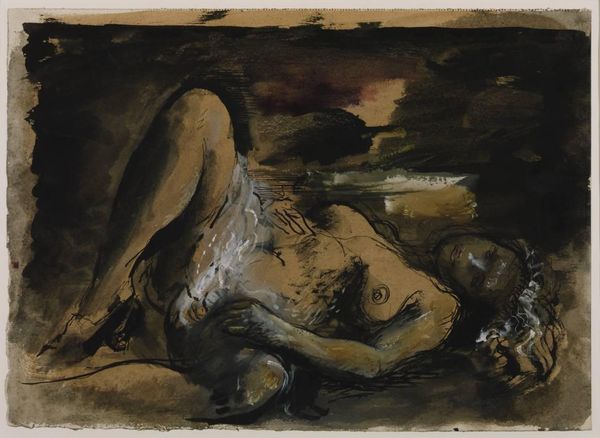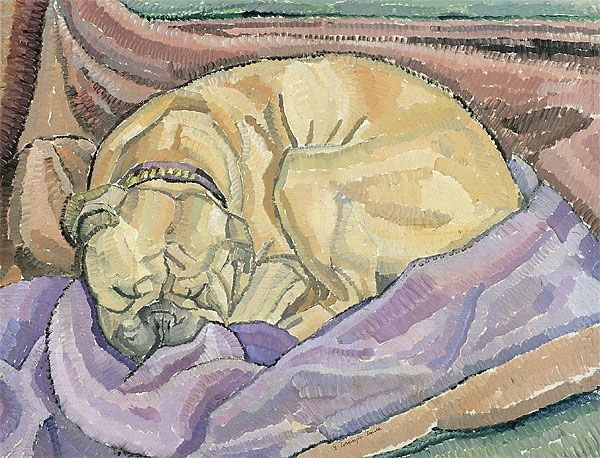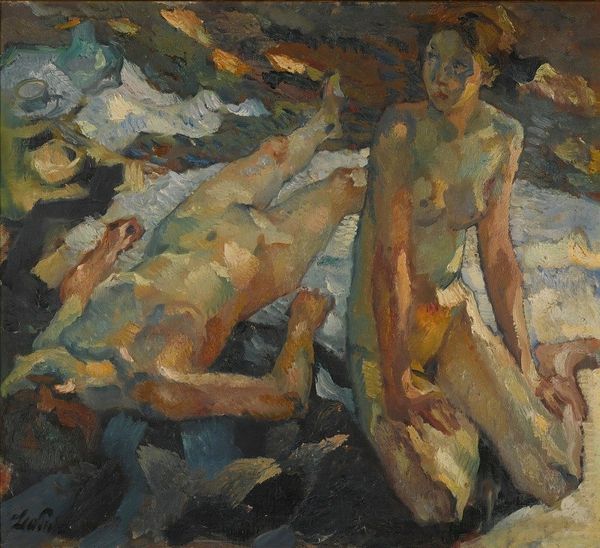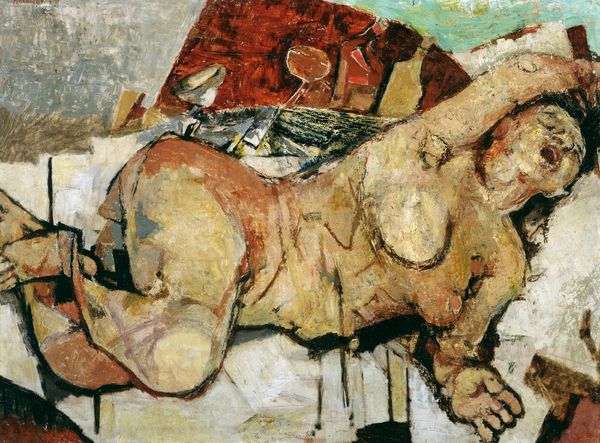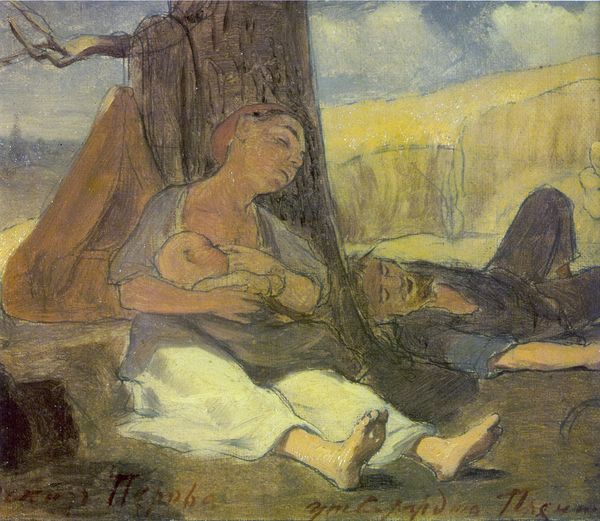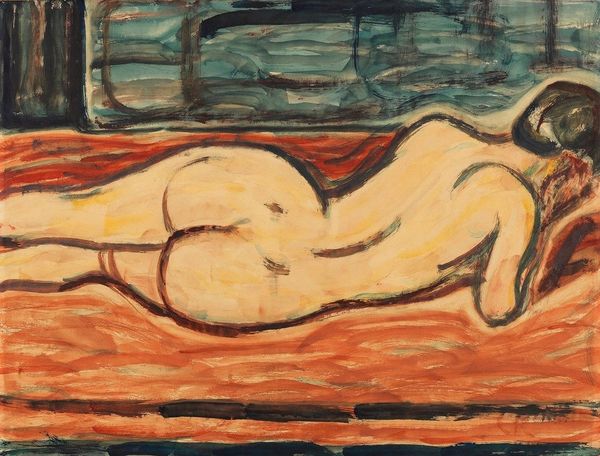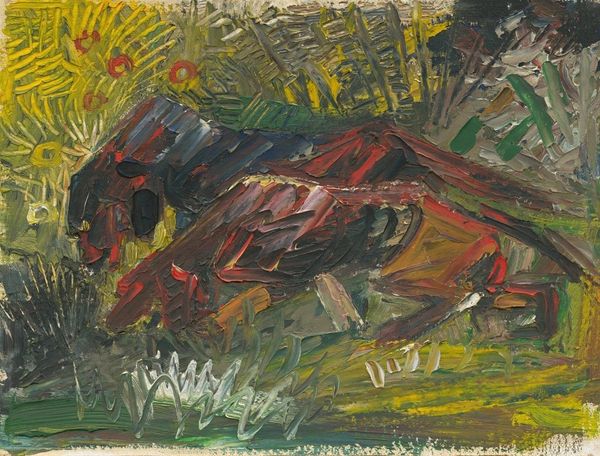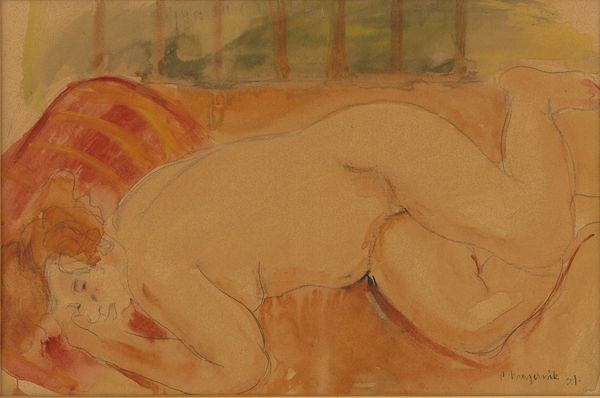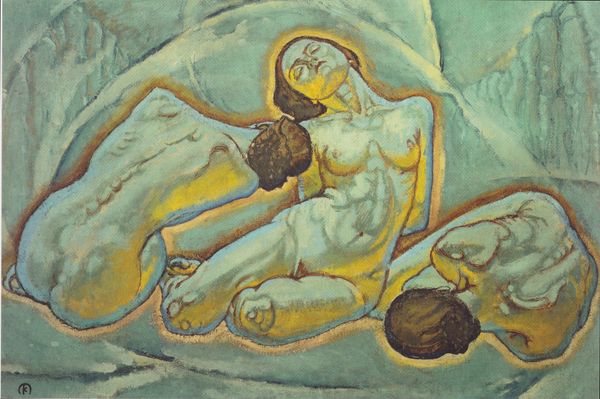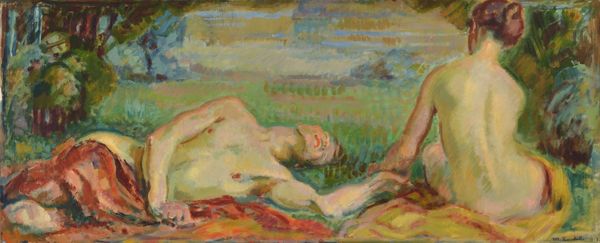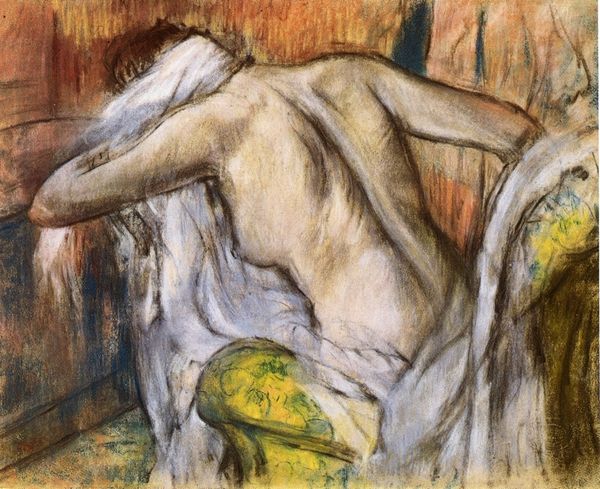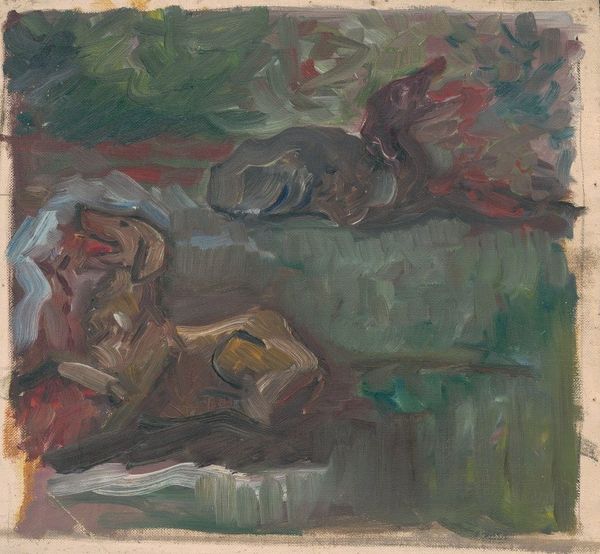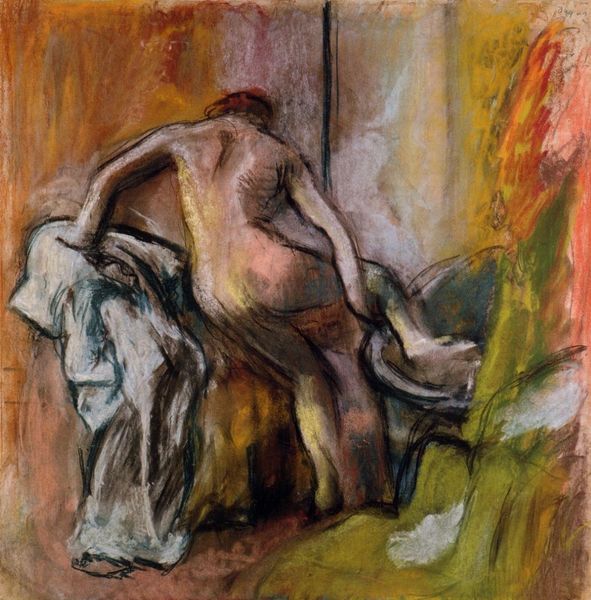
oil-paint
#
portrait
#
allegories
#
symbol
#
canvas painting
#
oil-paint
#
possibly oil pastel
#
oil painting
#
symbolism
#
nude
Dimensions: 37.7 x 50.3 cm
Copyright: Public domain
Editor: Here we have Koloman Moser's "Mermaid," painted in 1914, using oil paints. It's strikingly bold, especially the ochre tones used for the figure, quite a departure from typical depictions of mermaids. What's your perspective on this piece? Curator: This isn't about mythical creatures. Consider the raw materials: oil paint applied to canvas. The painting represents a material reality of early 20th century artistic labor, where artists like Moser were moving away from academic precision, embracing a new directness influenced by industrial production and the rise of consumer culture. What kind of labor went into creating this image, and who was the consumer? Editor: The loose brushstrokes, almost unfinished look... It suggests a quicker, perhaps more 'efficient' method of production? But who would buy it? Curator: Exactly. The application feels rapid, betraying a consciousness of the work having to function on the market. The Viennese Secession was exhibiting pieces like these for consumption by the rising bourgeoisie; not exactly mass-produced goods, but catering to specific tastes that embraced modern aesthetics and symbolized wealth. Did the materials constrain the possibilities or offer creative outlets, given the economic realities for Moser? Editor: So, the material constraints, both literal and economic, shaped Moser's artistic choices? And this depiction of the mermaid reflects that? Curator: Precisely. It's about deconstructing the image. What about the pigment itself? Its availability, cost, and even origin are factors to consider. Where did he acquire this colour? Editor: That's fascinating! I'd never considered the paint itself as a commodity influencing the artistic outcome, or a window on supply chains of the time. Curator: It pushes beyond idealizing an ethereal being and reveals a tension between art, craft, labor, and industry of the time. Art like this reflects very real social and industrial landscapes.
Comments
No comments
Be the first to comment and join the conversation on the ultimate creative platform.
